Please login or click here to join.
Forgot Password? Click Here to reset pasword
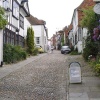 | 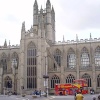 | 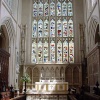 |  | 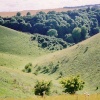 | 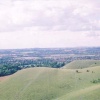 |
| Craig Breakey Posts: 268 Joined: 19th Nov 2008 Location: UK | quotePosted at 20:45 on 20th November 2008 Hello, I have Corel paint shop pro x1, And i am thinking about getting adobe cs4 to enhance my photo's, But to be honest i feel out of my depth. I am not sure with being just a beginner at photography. All the gear and no idea does not always help.lol Advice please. Craig.  |
| Jason T Posts: 7421 Joined: 14th Apr 2004 Location: UK | quotePosted at 20:47 on 20th November 2008 Ever tried photoshop elements?? its LOADS cheaper then CS4 but still pretty good program!! |
| Rod Burkey Posts: 554 Joined: 2nd Sep 2008 Location: UK | quotePosted at 12:15 on 30th December 2008 I've got CS3 and you might be able to get this cheaper than the ultra new CS4. I shoot all my stuff in Raw and the benefits are that good start off with a big image that can be kept as the original. I do this as my techniques do improve as time goes by and reverting to the original raw shot gives you the best starting point to picture editing possible right now. There are many Raw Converters and I've used Paint Shop Pro9 in the past which worked pretty well but Photoshop now is the one I use. Elements versus Photoshop. The price difference is great but Elemants is a very powerful piece of software and well worth starting off with. You might very well never need to go to a more expensive method. I just bit the bullet and now love using CS3.
|
| lurkalot Posts: 24 Joined: 29th Dec 2008 Location: UK | quotePosted at 16:08 on 31st December 2008 On 26th March 2008 19:40, BRIAN ARLOW wrote:
I shoot mainly in RAW with my 30D, and use the Canon DPP software to process them. I do have Elements 6, but only use this to correct horizons and other small tweaks that can't be performed in DPP. |
| Rod Burkey Posts: 554 Joined: 2nd Sep 2008 Location: UK | quotePosted at 13:35 on 4th January 2009 Hi Craig, Photoshop is a huge piece of kit and if you do plump for it I'd certainly advise going on a courset. I'm doing one right now, a thirty week course and it does certainly help a whole lot. As Elements is so much cheaper it might also be a good idea to have a try with this first to see how you like Adobe against Paintshop. I've got Paintshop Pro9 and still use it for certain tasks. The contrast controls for one. At the end of the day, quality counts and love it or hate it Photoshop really is the benchmark especially if you start off shooting in Raw. Seem to be repeating myself a bit now. Nurse!
|
| Sally Birch Posts: 292 Joined: 13th Feb 2009 Location: UK | quotePosted at 19:41 on 16th April 2009 I have just read through all the posts on this thread and apart from the rather offensive remarks made by Stephen I have found them interesting. I have recently started to take RAW images and am the proud owner of CS3 Ext which I am beginning to explore. Paul Hilton's comments are most illuminating not to mention helpful, keep up the good work please. |
| Rod Burkey Posts: 554 Joined: 2nd Sep 2008 Location: UK | quotePosted at 08:55 on 17th April 2009 Hi Sally RAW is, I think the way to go with all post camera images & CS3 is a great way of editing them & I love it. The added time at editing can be as short as pressing a button if you so desire. I keep all my images as RAW files much like I used to file negatives. You can always return to a RAW file and start a new way of editing later. One tip for those very special shots is to keep a PSD version before ending up with a TIFF of JPEG. PSDs allow you to open them up again and carry on editing from where you left off which can be very handy. I only do this with a few images but since it became a requirement in my Photoshop Course work I'm using the technique more. PSDs are very large as they include all the added layers etc in an "unflattened" form. Hope this has been of some help. |
| Mick Carver Posts: 25 Joined: 16th May 2006 Location: UK | quotePosted at 08:59 on 15th January 2010 Hi everyone, RAW vs JPEG, I suppose this is a debate that will go on for ever, much like 35mm vs medium format in the film cameras. I have only been able to shoot in raw for a few months, although I tend to shoot mainly jpegs, one argument for shooting raw is if the lighting situation is difficult the raw file will be easier to correct later as more info is available, what I do in tricky lighting situations is bracket my shots by one or two stops. When I first got my slr I put the camera onto a tripod and took lots of photos on jpeg/raw/ some 10mgp some 6mgp, Then I cropped them 100% and printed to A4 whilst this is not a scientific test I could not see any difference in any of the prints and obviously they all look the same on the screen .My raw shots are about 16mb but 6mp jpegs are about 3mb and 10mp are 5mb so my camera’s card will hold a least 3 times as many jpegs as raw. Having said all that if I see a shot that I think will be exceptional I will switch to raw (just in case). With regards to opening and converting raw files mine open in Picasa 3 this is a free program from Google and for a basic program it is vv good. |
| Rod Burkey Posts: 554 Joined: 2nd Sep 2008 Location: UK | quotePosted at 11:33 on 15th January 2010 Rather than try to save space on the in camera cards, I prefer to carry at least one spare card as I do all my work using RAW. It is more time consuming, but I feel for me it is worth it. When I used 35mm film it was capable of decent quality, but for portraits I used a very simple 120 Yasicamat and the increase in quaility was very obvious under studio lights etc. So, my view for what it's worth is always go for the option that alows for some cropping and the one that delivers the best quality available in what are now sophisticated cameras & lenses. Mick, I really admire your way of working but maybe I just don't trust myself enough to deliver quality images without opting for the methods I use. Rod.
Picasa sounds very good and certainly a way of exploring what RAW files can deliver.
|
| Paul Hilton Posts: 2605 Joined: 21st Nov 2004 Location: UK | quotePosted at 11:58 on 15th January 2010 Perhaps the question should be----do you want the camera to do the RAW conversion and produce a Jpeg from it, or do you want to do the conversion yourself ? There are instances where Jpegs will be more than adaquate and might be the right way to go for a situation. Perhaps taking continous high speed photos---My D3 will gobble up Jpegs at 9 fps for as long as you like; with RAW, after 20 shots, it slows, taking the time to clear the buffer and write to the card. But, shooting Jpeg, and you camera does the conversion, it turns photos into 8 bit images and you end up with 256 brightness levels to later work with. With RAW, it could be taking them as 12 bit images with 4,096 brightness levels now avaliable to you. If lighting is on the tricky side, RAW will let you alter the White Balance later on if you wish; with jpeg, that's now fixed, as are highlights, and if they've blown out, with RAW you can often bright detail back into them; like wise shadow areas. A bride's white wedding dress is an example of why I shoot weddings in RAW, plus other reasons too of course. Here's an example of a RAW shot photo with mixed lighting---sodium street lighting, with incandescent or flouresent interior lighting. Shot at ISO 4000---my normal street scene night setting--- the slight noise in the image was easily reduced. http://www.picturesofengland.com/England/Berkshire/Newbury/pictures/1105613
|